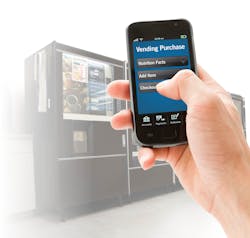28% Of Americans View Mobile Payment As The Payment Method Of The Future
As FinTech* services become more accessible in the US, new research from Mintel reveals that 28 percent of Americans view mobile payment as the payment method of the future. What’s more, two in five (40 percent) consumers are already using/interested in using mobile payment technology, including 56 percent of Millennials (age 22-39). In addition, one in five (18 percent) consumers overall would use mobile payments if more stores accepted it.
Mintel research reveals that engaging with financial services via mobile devices is becoming more and more commonplace, asone third (34 percent) of consumers with a bank account interact with financial services companies via mobile websites/apps, including the majority (55 percent) of Millennials. Another third (33 percent) of consumers wish that there were more alternatives to traditional banks, along with well over half (54 percent) of Millennials.
However, usage and adoption of other FinTech services** has yet to catch up with that of mobile payments. Despite the fact that one quarter (23 percent) of consumers are interested in using software or technology to help them make better financial decisions, just one in 10 have used a robo-advisor or a money management app (12 percent respectively). In fact, the majority (55 percent) of Americans have not even heard of robo-advisors and two in five (39 percent) have not heard of money management apps.
“While overall adoption of FinTech services remains low among Americans, our research shows that consumers are interested in the potential for using services like mobile payments in the future,” said Bryant Harland, Senior Technology Analyst at Mintel. “FinTech operators benefit from high consumer interest in mobile engagement in other areas of their lives, as well as the fact that many are looking for alternatives to traditional banks, especially younger consumers. However, FinTech operators are faced with the two-part challenge of increasing awareness and adoption. In addition to having the right infrastructure available, it is necessary to clearly communicate to consumers exactly how and where FinTech services can be used.”
Despite growing interest and adoption of mobile payment technology, which leads that of overall FinTech offerings, consumers do have their concerns, especially surrounding security: one in five (18 percent) consumers agree that using mobile payment technology to pay for products/services is less secure than using traditional payment methods.
What’s more, increasing consumer awareness and usage of FinTech services may prove to be a challenge as traditional financial services providers are viewed favorably: three in five (58 percent) consumers agree that it is generally easy to interact with their financial services providers. Another two thirds (65 percent) trust banks’ ability to protect their customers’ money, while 64 percent trust credit card companies to protect consumers against fraudulent purchases. Mintel research indicates that some Americans may be set in their financial ways as seven in 10 (69 percent) consumers are completely satisfied with their current financial services providers.
“Although there were concerns early on that FinTech startups would overthrow traditional banks, we are seeing that new technologies are opening the doors for both FinTech and traditional financial services providers to meet the ever-increasing digital needs of consumers,” added Lily Harder, Vice President of Research for Mintel Comperemedia. “Security and trust are critical for new FinTech entrants to compete against traditional players who have leveraged quick, effective responses to data breaches as opportunities to build trust with consumers. And while digital is the critical component for consumer adoption, incorporating a human element will appeal to consumers who are reluctant to completely rely on technology or are hesitant to leave their current provider.”
One clear way FinTech services can increase adoption is by educating consumers on how to manage their finances. Indeed, two in five (38 percent) consumers wish that financial companies would advise them on how to better handle their money, including two thirds (66 percent) of Millennials. Further, 32 percent of consumers are interested in financial investing, but do not know how to get started.
“Many FinTech companies already appeal to consumers by focusing on streamlining services and saving consumers time. What’s lacking is a focus on user experience from start to finish. By educating consumers on how to make smarter decisions with their money, FinTech operators can highlight the differentiating value they provide from traditional players in the industry,” concluded Harland.
*FinTech includes any service or technology that has altered the way consumers interact with, receive or manage their finances. Mintel research focuses on the following four categories of FinTech: user experience, alternate lending, alternate payment, and security.
**Mintel surveyed consumers on the following FinTech services: mobile payment, cryptocurrency, robo-advisor, peer-to-peer lending, and money management mobile app.
